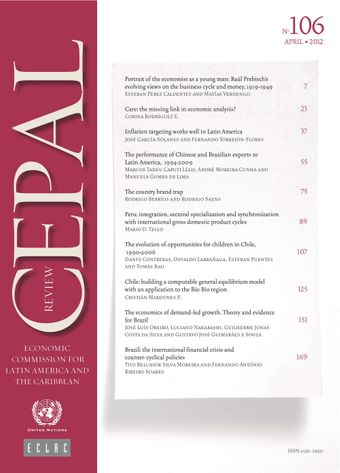-
Portrait of the economist as a young man: Raúl Prebisch’s evolving views on the business cycle and money, 1919-1949
- Source: CEPAL Review, Volume 2012, Issue 106, May 2012, p. 7 - 21
- Spanish
-
- 05 May 2012
Abstract
This paper analyses Raúl Prebisch’s lesser-known contributions to economic theory, related to the business cycle and heavily informed by the Argentine experience. His views of the cycle emphasize the common nature of the cycle in the centre and the periphery as one unified phenomenon. While his rejection of orthodoxy is less than complete, some elements of what would become a more Keynesian position are developed. In particular, there is a preoccupation with the management of the balance of payments and the need for capital controls as a macroeconomic management tool, well before Keynes and White’s plans led to the Bretton Woods agreement. In the process it is clear that Prebisch developed several ideas that are still relevant for understanding cyclical fluctuations in the periphery and that he became more concerned with the ability to take advantage of cyclical booms to maintain sustained economic growth.





